The Charm of Loft Style Tiny House Designs
Imagine stepping into a world where innovation meets simplicity, embodying a perfect blend of style and functionality. Loft-style tiny houses offer a unique charm that's difficult to resist. With their open floor plans and clever use of vertical space, these small house designs maximize every inch, transforming constraints into creative opportunities. In such homes, the loft area often serves as a cozy sleeping nook, freeing up the main floor for dynamic living spaces. The allure of loft-style tiny house plans lies in their adaptability, catering to varied tastes through customizable layouts and aesthetically pleasing forms. When considering tiny house kits, you'll find that loft designs not only amplify space but also bring in abundant natural light, fostering a warm and inviting atmosphere. Whether you desire a minimalist retreat or an adventurous dwelling, these compact yet comprehensive designs capture the essence of modern living in the most efficient way possible. As you explore the various tiny house plans available, you'll appreciate how loft styles elevate small living to an art form.
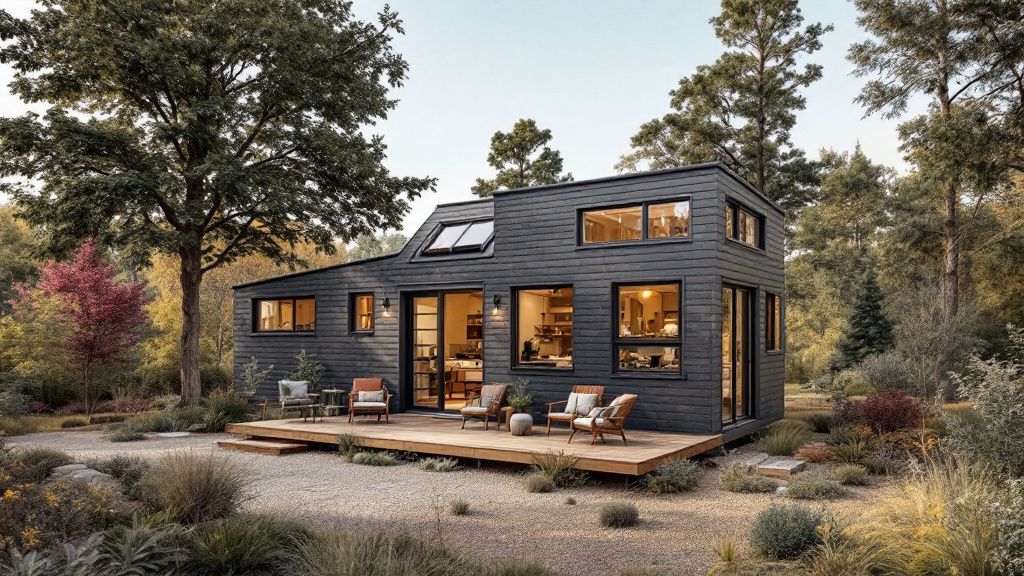
Understanding Loft Type Tiny Houses
Delving into the world of loft-type tiny houses reveals a fascinating blend of innovation and practicality. These homes often feature a raised area within the compact space that serves multiple functions, enhancing both usability and allure. This design evolution offers a perfect marriage of utility and aesthetics, where every corner serves a purpose. In exploring tiny house plans, you'll find the loft is a hallmark of ingenious design catering to those who appreciate efficient living.
Loft-type tiny houses capture the imagination with their distinctive layouts that maximize vertical height. The elevated loft area typically functions as a sleeping space, freeing up the main floor for daytime activities. This architectural choice is ideal for small house designs, transforming limited square footage into an airy and inviting environment. When considering tiny house kits, these designs provide a streamlined option for building a cozy yet versatile home.
One unpopular opinion about loft-type tiny houses is that they may not suit everyone, especially those who find the ladder or staircase access challenging. Despite this, the charm lies in the loft's ability to create a separate, intimate space within a compact setting, offering an enriching experience. While some see this as a potential drawback, others appreciate the chance to craft a unique sanctuary away from the main living area.
The adaptability of loft designs makes them appealing to various preferences and lifestyles. Whether you envision a minimalist sanctuary or a vibrant, eclectic home, tiny house plans with lofts can be tailored to meet your needs. The incorporation of natural light through strategic window placement enhances the spacious feel, creating a warm and inviting atmosphere that defies the compact dimensions.
In essence, understanding loft-type tiny houses opens up a world where space efficiency meets stylish living. They invite you to ponder the possibilities of a simplified life without sacrificing comfort or aesthetic appeal. As you explore these innovative small house designs, you'll discover that loft-style homes offer more than just practicality—they inspire a new way of living compactly.
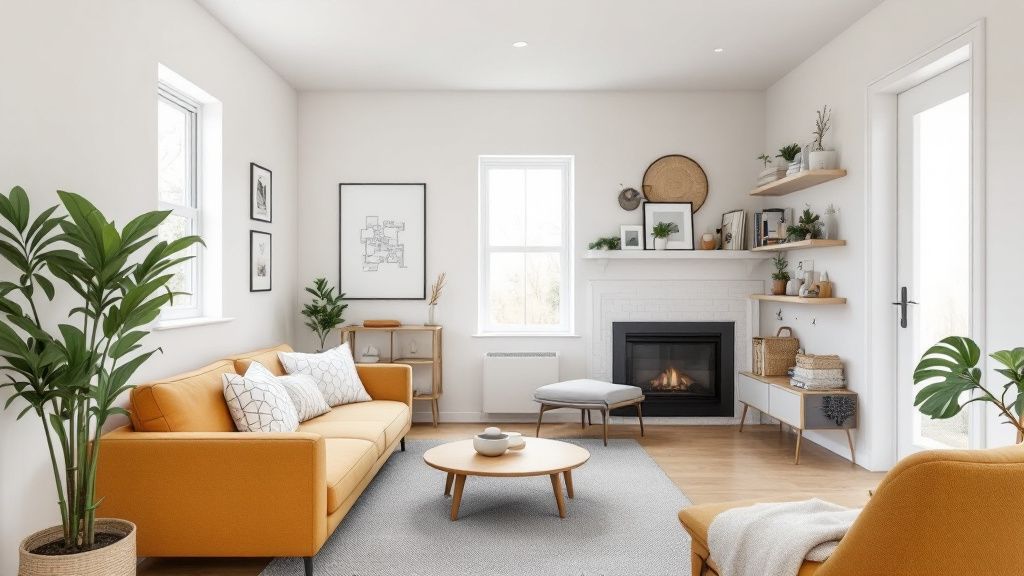
Designing Your Loft Type Tiny House
Embarking on the journey to design your loft-type tiny house invites you into a world of creativity and personalization. The first step is to determine the optimal layout that meets your unique lifestyle. You must assess how you'd like to utilize the available space efficiently, with the loft serving distinct functions such as a sleeping area or creative workspace. Consider how your daily activities will flow within these compact yet versatile quarters.
Choosing the right materials is pivotal to match your vision and needs. For example, using sustainable and eco-friendly materials can enhance the environmental appeal of your small house designs. Wood and metal often serve as durable, lightweight options that complement the minimalist structure. By selecting materials thoughtfully, you can ensure that your tiny house aligns with the principles of sustainability while maintaining a cozy ambiance.
Incorporating storage solutions is crucial to maximize the utility of your small space. Think about integrating built-in cabinetry or multi-purpose furniture that seamlessly blends with the aesthetic. These smart design choices will ensure that every item in your home has its designated place, reducing clutter and fostering an organized, serene environment. Tiny house kits often provide innovative solutions, simplifying the integration of such storage options.
Natural light plays a significant role in the look and feel of your loft-type tiny house. Strategically placed windows or skylights can transform the atmosphere, making it appear more spacious and vibrant. Additionally, incorporating features that allow for adequate ventilation enhances comfort, ensuring your tiny abode stays fresh and inviting throughout the seasons.
Selecting the perfect finishing touches allows you to add personality and flair to your loft design. From choosing a color palette to adding unique decorative elements, these choices bring your vision to life. Embrace the opportunity to create a space that is not only functional but also an exquisite reflection of your style, culminating in a tiny house that feels truly like home.
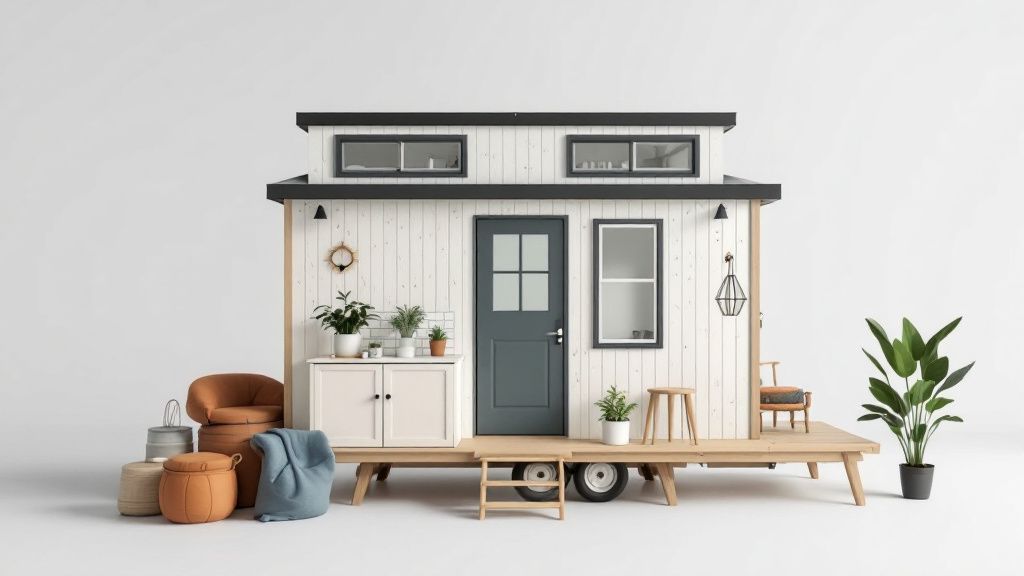
Popular Loft Type Tiny House Plans
Exploring popular loft-type tiny house plans offers a glimpse into a diverse world of compact living solutions. One favored layout features open floor plans, where the main living area flows seamlessly into the kitchen, creating an inviting social space. The loft, typically positioned above the living room, provides a private retreat. Such small house designs offer a harmonious blend of connected spaces and personal enclaves.
A floor plan with dual lofts is another intriguing option. This configuration not only maximizes vertical space but also introduces versatility by offering multiple sleeping areas or dedicated storage. With this design, family living becomes more feasible, accommodating different needs without compromising on space or comfort. Tiny house kits for dual loft designs supply all-inclusive solutions for those eager to build efficiently.
To optimize your choice from these plans, consider the practical aspect of furniture placement. Try incorporating foldable or multipurpose furniture that adapts to your usage patterns. Such pieces can shift roles throughout the day, from creating extra seating during gatherings to expanding into a dining table, effectively utilizing every inch of your compact environment. These thoughtful touches enhance both the functionality and elegance of your loft-style tiny home.
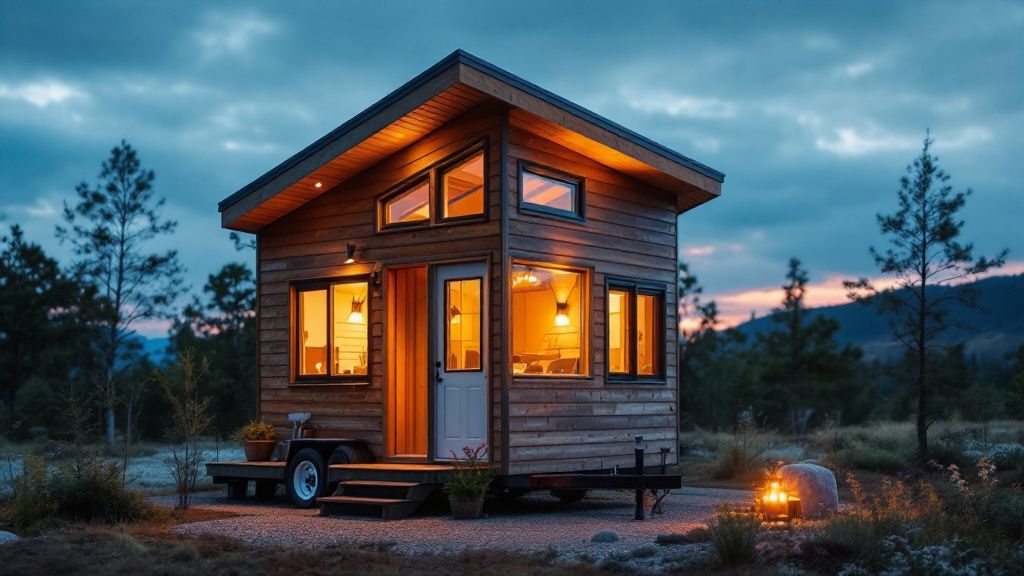
Cost Considerations for Loft Type Tiny Houses
When considering the cost of loft-type tiny houses, it's essential to factor in both the upfront expenses and potential savings. Building a tiny home often incurs lower initial costs than traditional houses due to reduced material needs and smaller footprints. However, customization options, such as high-quality finishes or advanced systems, can affect the budget. Planning meticulously ensures you stay within financial limits while achieving your desired outcome.
Material selection significantly impacts the overall cost of constructing a tiny house. Opting for sustainable materials can save money in the long run through improved energy efficiency. Prefabricated elements from tiny house kits often offer more predictable pricing, reducing the risk of unexpected expenses. Embracing recycled or reclaimed materials in your design further helps manage costs without compromising quality or style.
What most people don’t see about tiny house plans is the intricate budgeting process that makes all the difference between an economical build and potentially overspending. Hidden costs, such as permits or site preparation, are often overlooked but crucial for compliance and safety. Thorough research and obtaining expert advice offer insights into potential expenditures, enabling more accurate financial planning from the start. These strategies ensure that your investment is both sound and satisfying.
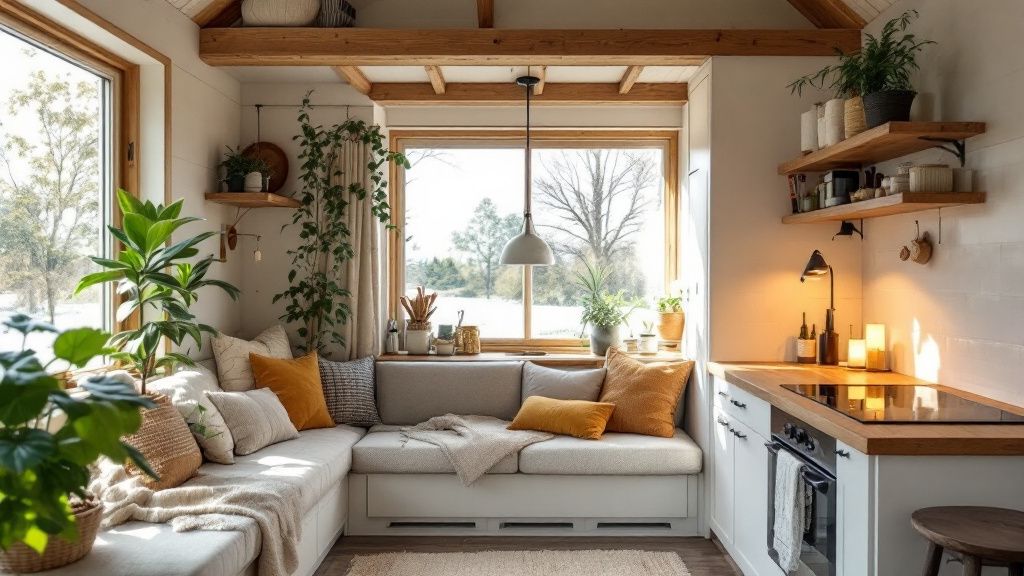
Sustainable Living in Loft Type Tiny Houses
Sustainable living in loft-type tiny houses represents a harmonious blend of minimalism and eco-consciousness. This lifestyle choice significantly reduces environmental impact through efficient energy use and reduced resource consumption. Integrating eco-friendly systems like solar panels and rainwater harvesting mechanisms enhances self-sufficiency. Selecting sustainable materials for construction and interior design not only supports green living but also contributes to healthier indoor air quality, encapsulating the ethos of modern small house designs.
Tracing the evolution from the 19th-century small cabin movement, today's tiny houses reflect a growing awareness of sustainability and environmental stewardship. Initially driven by necessity and practicality, these compact dwellings have become emblematic of a conscious lifestyle shift. Modern tiny house plans draw on historical simplicity while encompassing contemporary innovations such as energy-efficient appliances and modular design elements included in tiny house kits, making them an ideal choice for those committed to a greener future.
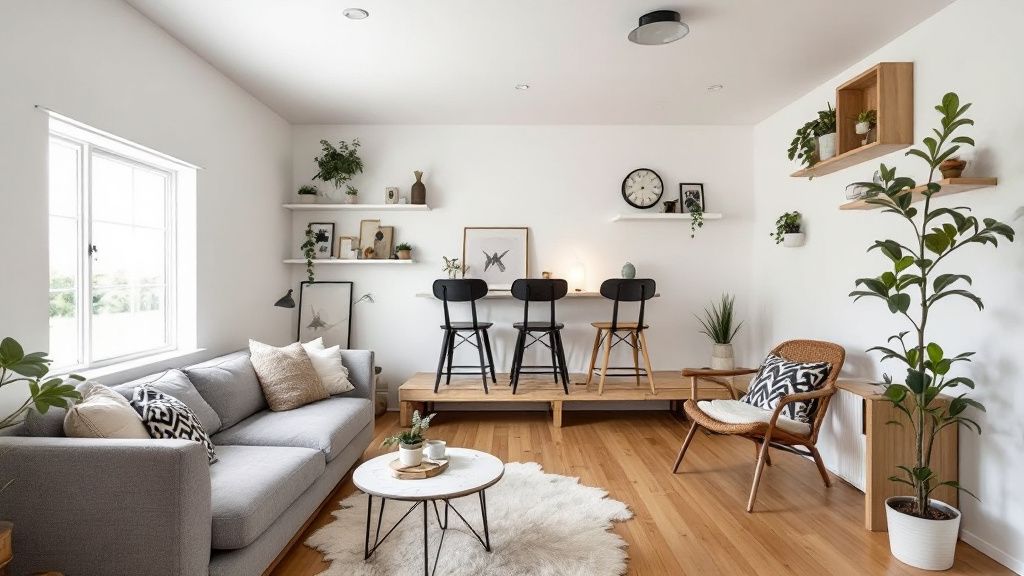
Challenges of Loft Type Tiny Houses
Living in loft-type tiny houses comes with a unique set of challenges that require thoughtful consideration. Space constraints are at the forefront, demanding creative solutions to make every square foot count. Organizing and managing belongings efficiently is crucial to maintaining order and maximizing comfort. These small house designs necessitate careful planning to ensure that both functionality and aesthetic appeal are achieved without feeling cramped.
Privacy can sometimes be limited in loft-style homes due to their open layouts. Think of the loft as a treehouse in the forest. Just like a treehouse, it offers an elevated retreat but is not completely isolated from the surroundings. This metaphor captures the balance between openness and seclusion, highlighting the need for inventive approaches, such as dividers or curtains, to create personal spaces within the cozy confines.
Temperature regulation is another hurdle you might face. High ceilings often lead to uneven heating or cooling, especially near the loft area. Ensuring energy-efficient insulation and ventilation systems become vital for maintaining a comfortable indoor climate. Tiny house kits frequently include solutions for these issues, helping you maintain an optimal environment without excessive energy consumption. These considerations enable a harmonious balance between sustainability and comfort in tiny living.





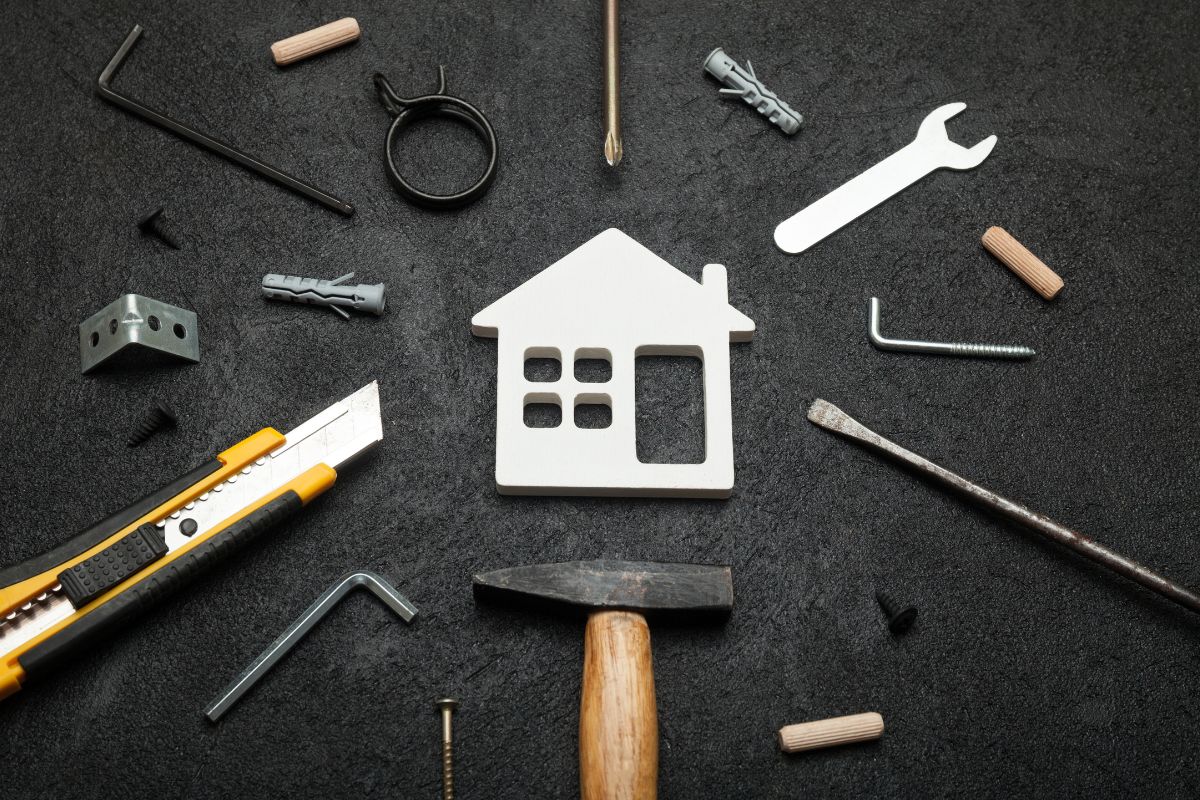
Share: